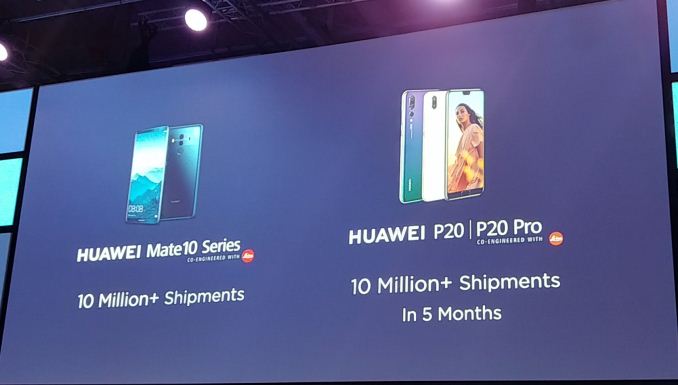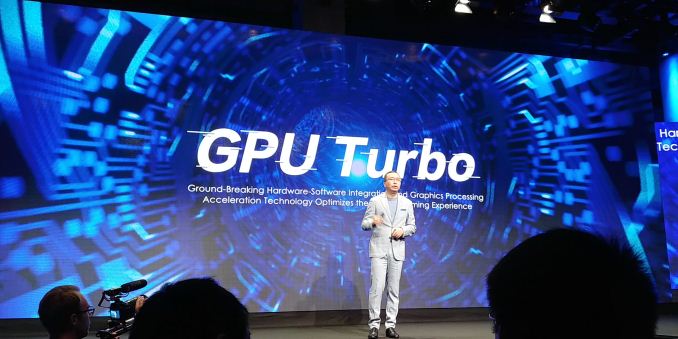Huawei’s GPU Turbo: Valid Technology with Overzealous Marketing
by Ian Cutress & Andrei Frumusanu on September 4, 2018 9:00 AM EST- Posted in
- Smartphones
- Huawei
- Mobile
- Benchmarks
- honor
- Neural Networks
- Kirin 970
- AI
Conclusion: Still A Plus, But
Back in 2015, AnandTech was in the extraordinary position to be the first western publication to actually meet with HiSilicon, reporting on the Kirin 950 from their Beijing media briefing. One of the things I still remember from back then was a definitive sense of humility and a very good sense of self-awareness in regards to the company’s products. Things have changed a lot in the past three years, and Huawei as a company has grown considerably since then.
Huawei and Honor combined now sell 153 million smartphones a year, and Huawei is now the second largest smartphone manufacturer worldwide, recently overtaking Apple. Honor claims it is fifth worldwide. Huawei has also stated that it will raise its future R&D budget from 15% of total revenue (US$13.23 billion) up to 20-30% during the race to 5G. Both are major players in this space, to the point where Huawei’s in-house silicon design team, HiSilicon, creates its own SoCs to help differentiate its products from those based on Qualcomm and MediaTek SoCs.
The explosive growth from Huawei not only goes into R&D, but also marketing. As the company has expanded, we have seen smartphone launch after smartphone launch held in glamorous places in Europe, along with perhaps the biggest sampling program for smartphone launches ever: all members of the invited press to the show, typically around 500-2000, are sampled. This is compared to Samsung and Apple who offer limited units to select press only, or LG who does both unit distribution at briefings (30+) and sampling to press. With the desire to gain brand awareness, and recognition, Huawei has gone into overdrive with its methodology, which has been a metaphorical double-edged sword – while delivering innovative solutions on the technical side, the brand message in some ways strayed from its more humble roots.
Developing technologies like GPU Turbo is going to be key for Huawei. Huawei has obvious gaming performance, image quality, and power efficiency deficits to Qualcomm’s Snapdragon. Playing with the silicon die for price/performance/area is a balancing act and will offer some gains, but typically at the expense of other specifications. This is why GPU Turbo is important: development of GPU Turbo is a "free" efficiency gain from a hardware perspective. Rather than involving new silicon, it's developed through a dedicated software effort, and as a result of the gains the feature is being rolled out across the range of smartphones that both Huawei and Honor offer at retail. GPU Turbo still has ways to go, such as expanding the number of games supported, and potential improvements on the horizon, such as having a single algorithm to cover all use-cases, but the future looks good for it.
Marketing these technologies, like GPU Turbo, is also important. Comparing the headline 60% better performance and 30% better efficiency data on the Kirin 970, with GPU Turbo, to the Kirin 960, without GPU Turbo, almost a year after the launch of the Kirin 970 and not declaring this in every presentation is a deliberate attempt at obfuscation. This is borne through Huawei’s own data in the same presentations, showing the Kirin 980 achieving minor performance and efficiency gains when the feature is enabled. The gains are still worth having, but are vastly lower than the numbers Huawei likes to promote every time GPU Turbo is mentioned.
This, along with the recent discovery of benchmark detection and acceleration to get higher scores, suggests that someone at Huawei is trying to pull the wool over the users’ eyes. It is not a good look, and despite Huawei’s explosive growth, key figures at the company are going to have to look inwards at how they want the company to be perceived on the main stage. The bigger the company is, the more it ends up under the microscope, so maintaining a level of honesty is important, otherwise the trust with the consumer is lost quick and fast. Trying to hide the real world numbers, just to get high on a performance table, just looks bad. It is bad.
The Final Word on GPU Turbo
As mentioned several times in the review, now that GPU Turbo has been explained in greater detail, the technology is genuine as far as we can tell, and is likely going to be a catalyst for a new way for vendors to differentiate themselves across the mobile spectrum, as the competition will be looking into similar solutions.
For everything we just stated about Huawei’s presentations, we hope that the company is giving plenty of kudos and praise to the teams that had the idea, and developed the technology. In an ever competitive landscape where SoC vendors need to differentiate and try to one-up each other, technologies like GPU Turbo are emerging as innovative advantages, improving the overall user experience.
Time, hardware, and software permitting, we will be aiming to go and get fully accurate benchmark data with and without GPU Turbo on the Kirin 980 after its launch. Stay tuned.
Benchmarking and Core Analysis by Andrei Frumusanu
Extra Analysis and Conclusion by Ian Cutress













64 Comments
View All Comments
Ian Cutress - Tuesday, September 4, 2018 - link
In the past, those 'cheats' were often from not rendering parts of the scene. This is still doing the full render that any Mali GPU does, but in a more power efficient way. The key to benchmarking is to test across several titles regardless, which is going to be important moving forward.Manch - Wednesday, September 5, 2018 - link
Does Mali or any mobile GPUs do culling of unseen objects? If not, can that be implemented to further reduce load?The Hardcard - Tuesday, September 4, 2018 - link
That isn’t a quandry, it solves the problem. The problem before is that the makers showed benchmark performance that they didn’t feel the device could handle in normal user apps. If this pans out and users can have it everyday apps means no harm, no foul.Having it be a special mode for apps that can use it, while turning it off when it is not necessary is exactly what is needed and what everyone is trying to do and should do.
If they do it properly, then it is on the developers to use it. Sure, older, unupdated apps will be left behind. That is the nature of advancing technology.
melgross - Tuesday, September 4, 2018 - link
A benchmark cheat is just for benchmarks. There’s a reason for that, and it has to do with the fact that the SoC, and the device, as a whole, can’t perform at that level commercially, otherwise something negative will happen, such as overheating, and battery failure.So, no, they can’t extend cheating to regular apps, and that’s the entire point to the cheat. If they could, then they would, and it wouldn’t be a cheat. This cheating is different from the turbo mode the article is about.
s.yu - Monday, September 10, 2018 - link
The only way this is working is the apparent popularity of MMO games. They only plan on catering to low end customer who only play whatever "everybody else" plays. I for one avoid them like the plague, IAP rigged games are cheap stimulation, too cheap.tipoo - Tuesday, September 4, 2018 - link
Reminds me of the good old ATI vs Nvidia days when there were notable differences in render quality, usually with the edge to ATI. That all but went away at least as far back as the 8800, maybe before. Now for mobile to repeat that process.Ian Cutress - Tuesday, September 4, 2018 - link
Just to make sure you're aware, that's kind of orthogonal to GPU Turbo. It's Mali behaviour right now, which explains some of the perf differences, but GPU Turbo is something separate.Lord of the Bored - Wednesday, September 5, 2018 - link
Not ALWAYS to ATI, though. Sometimes they got a little aggressive in their "optimizations" too.QUAFF3 NEVER FORGET!
https://techreport.com/review/3089/how-ati-drivers... ffor the kiddos that never saw this one. Back when men were men, and PC gaming was the exclusive domain of nerds that knew what IRQ and DMA meant(but probably not PCMCIA. No one could remember PCMCIA).
Holliday75 - Friday, September 7, 2018 - link
I recently found a PCMCIA 10mb NIC in one of my file cabinets and a 28.8k modem. I looked at them a second like wtf then remembered what they were.nils_ - Friday, September 7, 2018 - link
People Can't Memorize Computer Industry Acronyms